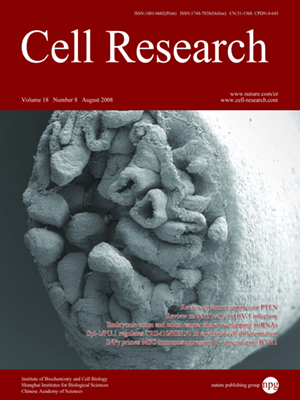
Volume 18, No 8, Aug 2008
ISSN: 1001-0602
EISSN: 1748-7838 2018
impact factor 17.848*
(Clarivate Analytics, 2019)
Volume 18 Issue 8, August 2008: 871-878
ORIGINAL ARTICLES
Tuning the mechanosensitivity of a BK channel by changing the linker length
Hucheng Zhao1,2 and Masahiro Sokabe2,3,4
1Institute of Biomechanics and Medical Engineering, Tsinghua University, Beijing 100084, PR China;
2Department of Physiology, Nagoya University Graduate School of Medicine School, 65 Tsurumai, Nagoya 466-8550, Japan;
3International Cooperative Research Project / Solution Oriented Research for Science and Technology, Cell Mechanosensing Project, Japan Science and Technology Agency, Nagoya 466-8550, Japan;
4Department of Molecular Physiology, National Institute for Physiological Sciences, Okazaki 444-8585, Japan
Correspondence: Hucheng Zhao Masahiro Sokabe(zhaohc@mail.tsinghua.edu.cn msokabe@med.nagoya-u.ac.jp)
Some large-conductance Ca
2+ and voltage-activated K
+(BK) channels are activated by membrane stretch. However, the mechanism of mechano-gating of the BK channels is still not well understood. Previous studies have led to the proposal that the linker-gating ring complex functions as a passive spring, transducing the force generated by intracellular Ca
2+ to the gate to open the channel. This raises the question as to whether membrane stretch is also transmitted to the gate of mechanosensitive (MS) BK channels via the linker-gating complex. To study this, we changed the linker length in the stretch-activated BK channel (SAKCaC), and examined the effect of membrane stretch on the gating of the resultant mutant channels. Shortening the linker increased, whereas extending the linker reduced, the channel mechanosensitivity both in the presence and in the absence of intracellular Ca
2+. However, the voltage and Ca
2+ sensitivities were not significantly altered by membrane stretch. Furthermore, the SAKCaC became less sensitive to membrane stretch at relatively high intracellular Ca
2+ concentrations or membrane depolarization. These observations suggest that once the channel is in the open-state conformation, tension on the spring is partially released and membrane stretch is less effective. Our results are consistent with the idea that membrane stretch is transferred to the gate via the linker-gating ring complex of the MS BK channels.
Cell Research (2008) 18:871-878. doi: 10.1038/cr.2008.88; published online 29 July 2008
FULL TEXT | PDF
Browse 1954


